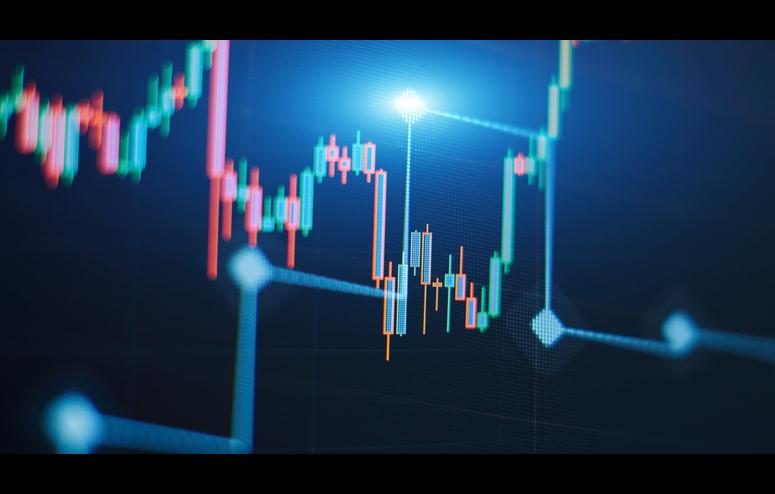These 4 Consumer Staple Stocks Can Help Protect Your Portfolio - Tokenist

Neither the author, Tim Fries, nor this website, The Tokenist, provide financial advice. Please consult our website policy prior to making financial decisions.
Last Thursday, Federal Reserve Chair Jerome Powell framed the economic landscape in dire terms, stating that “the path we’re on is unsustainable.” One could draw many data points to bolster his point. As of September, the budget deficit ran up to $1.7 trillion, a $320 billion increase from 2022.
At the same time as the Fed interest rate hikes attempt to bring down inflation, the USG expenditures on net interest payments rose to $711 billion. In other words, much of economic output is being redirected to avoid the sovereign debt crisis. Consequently, according to Bloomberg economists, a recession is still on the horizon.
Investors look at consumer staple stocks in this time of unsustainability and uncertainty. These companies supply goods that people need regardless of economic cycles, making them recession-proof. In turn, such reliable profit inflow gives them generous dividend yields.
In economic downturns, reliable dividend yield represents a low-risk hedge against wealth erosion. Having reliable income sources from essential goods, consumer staple companies can afford to pay a larger portion of their earnings to shareholders.
If a company’s share is priced at $100 while paying a $1 dividend annually per share, its dividend yield would be 1%. The present industry average dividend yield is 1.7%. With that in mind, which staple stocks to pick and why?
Aptly named wholesale retailer, Costco maximizes the return on membership-only warehouse sites. This business model keeps operating costs predictable and low while offering bulk discounts. Costco picks the most popular items and then offers them in high volumes.
As of September 2023, Costco attracted nearly 128 million members. With global warehouse-like stores, the company’s goods range from groceries, home goods, and apparel to electronics. Unsurprisingly, Costco’s business model positioned it as a healthy company, with only a 25.8% debt-to-equity ratio.
As inflation pressures people into cost-effective bulk-buying, Costco’s net sales increased 9.4% as of September 3 compared to the prior quarter. For the twelve months ending August 31, Costco’s revenue jumped 8.23%. Year-to-date, COST shares increased 21% in value, currently priced at $555.38 per share.
Based on 29 analysts, Nasdaq consensus places COST stock in the “strong buy” category, with a low estimate of $502 against the high estimate of $680. Although offering a 0.74% dividend yield, there is hardly a better company suited to endure the harshest economic cycles and increase yields during them.
Join our Telegram group and never miss a breaking digital asset story.
Over the years, multiple studies have shown that vaping is healthier than conventional smoking. Although vaping is still less healthy than not indulging in the habit at all, it offers a transitory avenue for over 1 billion smokers.
Philip Morris has positioned itself as the leading international tobacco company on that road, offering a wide range of nicotine products. These goods are not staple per se but are equally as essential to consumers. Given its ownership of iconic cigarette brands such as Marlboro and Chesterfield, PM has a global reach and competitive advantage.
In a new role as a smoke-free tobacco company, PM’s net revenue has increased 4.3% year-over-year, ending June 30. Although PM missed the expected revenue windfall of $9.17 billion in last week’s latest earnings, against achieved $9.14 billion, new products surpassed expectations.
In particular, the shipment volume of PM’s smokeless Zyn nicotine pouch, following the acquisition of Swedish Match, increased by 65.7%. Such strong diversification away from conventional smoking is why the Nasdaq consensus, across 15 analysts, is a “strong buy.”
The average price target is $109.06, with a high estimate of $120 and a low estimate of $85.5 vs the present price of $90.98 per share. Philip Morris offers one of the highest dividend yields at 5.6%, although it is still lower than the average of 6.1% in the tobacco industry.
Unilever PLC (LON: $ULVR)
This British multinational has over 400 brands under its consumer goods belt. Unilever manufactures and sells a variety of items, from foods and beverages to home care and personal products.
This Thursday, Unilever will release its Q3 earnings report. In the last quarter, the company beat sales growth estimates at 7.9% vs forecasted 6.4%. The underlying sales grew by 9.1%. Nasdaq consensus, across 7 analysts, puts UL stock in the “buy” category.
The average price target stands at $229.67 vs the present $48.72, with a low estimate of $44. Unilever’s dividend yield is 3.6%, forecasted to rise to 4.2% in the next three years.
Even Higher but Riskier Dividend Yield
In fiscal 2023, Walgreen Boots Alliance (NASDAQ: $WBA) had a net loss of $3.1 billion, vs net earnings of $4.3 billion last year. Yet, the retail pharmacy chain offers the highest dividend yield of 9%. Given WBA’s low debt-to-equity ratio of 31.8%, the company has plenty of space to recover and keep those payouts coming. This includes lowering overall costs and investing in digital initiatives for healthcare delivery.
Year-to-date, WBA stock performed poorly as expected, losing 41% of its value. This puts it into a discounted “buy” category, according to 17 analysts aggregated by Nasdaq. The average price target is $26.89 vs the present $22.18, with a low estimate of $22, which aligns with the bottom at press time.
If a major recession happens, will you prioritize saving or investing? Let us know in the comments below.
